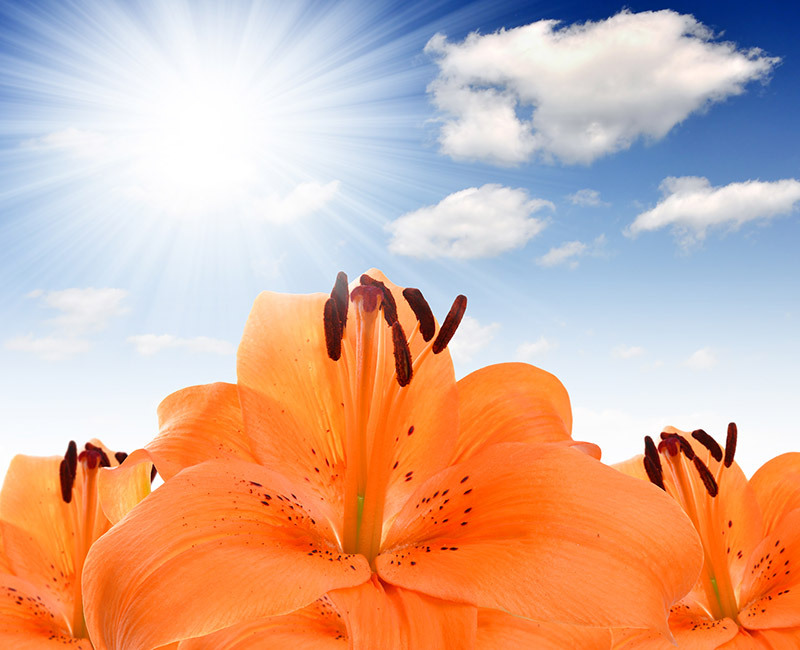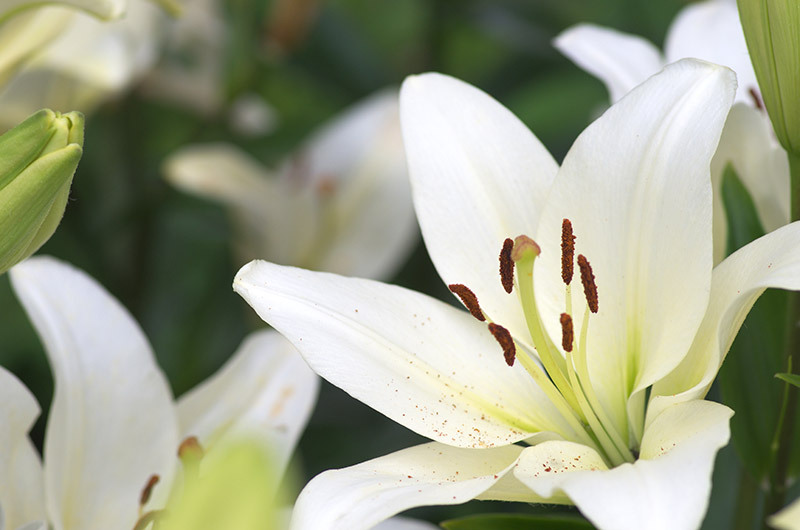Revolutionize Your Poinsettia Care Routine
Posted on 22/08/2025
Revolutionize Your Poinsettia Care Routine for Vibrant Holiday Blooms
The poinsettia, scientifically known as Euphorbia pulcherrima, has captured hearts worldwide as the quintessential festive plant. Yet, many plant lovers struggle each year to keep their poinsettias thriving longer than the holiday season. Are you ready to transform your poinsettia care routine and enjoy bold, beautiful bracts all season long and beyond? This comprehensive guide explores expert advice and innovative strategies to help you revolutionize how you care for poinsettias.

Understanding the Unique Needs of Poinsettias
Most people think poinsettias are fleeting decorations, but with deliberate poinsettia care routines, these plants can be enjoyed for years. To revolutionize your poinsettia care practices, begin by understanding what makes this plant unique:
- Origin: Native to the warm, humid regions of Mexico
- Photoperiodic: Bract coloration relies on specific light/dark cycles
- Sensitive growth: Susceptible to overwatering, chilly temperatures, and poor lighting
- Seasonal beauty: Bracts (not flowers!) provide the showy colors
Common Misconceptions About Poinsettia Plants
- Poinsettias are toxic: Modern research shows they are generally safe for pets and humans, though not edible.
- Short-lived plants: With proper poinsettia plant care, they can last beyond several holidays.
- Require a lot of attention: The right care routine makes maintenance simple and rewarding.
Optimal Placement: Where Should You Put Your Poinsettia?
Location matters when it comes to healthy poinsettias. Choose the perfect home for your plant with these expert tips:
- Bright, indirect light: Place near east or south-facing windows, avoiding harsh midday sun that may scorch the leaves.
- Temperature: Maintain consistent room temperature between 65?F and 75?F (18?C to 24?C). Avoid drafts, sudden temperature shifts, or touching cold windowpanes.
- Humidity: Poinsettias crave humidity. Place a tray of water or a humidifier nearby, especially in dry winter climates.
- Avoid ethylene gas: Never keep poinsettias near ripening fruit or exhaust, as they release ethylene gas that damages the bracts and leaves.
Revolutionary Watering Tips for Poinsettias
Improper watering is the top cause of poinsettia problems. Innovate your poinsettia watering schedule with these scientifically-backed strategies:
- Check soil moisture: Insert your finger about one inch into the soil. If it feels dry, it's time to water.
- Water thoroughly: Water until it runs through the drainage holes. Discard any excess from saucers to prevent root rot.
- Frequency matters: Overwatering kills roots! Typically, water every 5-7 days in winter, but always use the soil check method first.
- Container tips: Ensure pots have adequate drainage and never allow plants to sit in standing water.
Pro Tip: Bottom Watering Method
If you struggle with overwatering, try the bottom watering technique. Place the poinsettia pot in a shallow basin with 1-2 inches of water. Let it absorb moisture for 15-20 minutes, then remove excess water. This method enables the roots to uptake water naturally -- a game-changer for poinsettia care!
Nourishing Nutrients: Feeding for Lush Growth
A revolutionized poinsettia care routine includes mindful feeding. Although your plant doesn't need fertilizer during its blooming period (December-February), begin regular fertilization once new growth appears in spring:
- Type: Use a balanced, water-soluble fertilizer (20-20-20 or similar).
- Frequency: Feed every 2-4 weeks during spring and summer; reduce or stop in fall and winter unless you're actively growing foliage.
- Avoid overfeeding: Excess nutrients can burn roots and stunt the bracts' coloration.
The Science of Bract Coloration: Timing Darkness for Blooms
Ready to re-bloom your poinsettia next year? Bract coloring is triggered by photoperiodism--a precise balance of darkness and light. Here's how to revolutionize your bract care for repeat color:
How to Induce Bract Color
- Start in Fall: Beginning in late September or early October, provide 14-16 continuous hours of complete darkness each night for 8-10 weeks.
- Continue Room Light During the Day: During daytime, expose to bright, indirect light for about 8-10 hours.
- No Interruptions: Even a brief moment of light at night can disrupt the plant's color cycle.
- Use a Box or Curtain: Cover the plant with a large box or place it in a closet nightly. Uncover every morning.
After this process, you should start seeing vibrant reds, pinks, whites, or even marbled bracts just in time for the festive season!
Pruning: Key to Fuller, Stronger Poinsettias
Pruning is often overlooked in poinsettia maintenance, but it's crucial for shaping and encouraging bushy new growth. Follow these tips to rejuvenate your poinsettia:
- After Bloom: Once the colorful bracts fade (late winter or early spring), prune the stems back to about 4-6 inches above the soil.
- Stimulate Growth: Pinch back new shoots monthly during spring and summer to promote branching.
- Hygiene: Always use sterilized shears to prevent plant diseases.
Repotting: When and How to Give Your Poinsettia Room to Grow
Does your poinsettia seem rootbound or wilt easily? It might need repotting. Here's when and how to do it:
- Best Time: Repot in spring after pruning and as new growth begins.
- Pot Choice: Choose a container 1-2 inches larger in diameter with ample drainage holes.
- Soil: Use light, well-draining potting mix (peat, perlite, and compost blend).
- Care After Repotting: Place in indirect light and keep soil moderately moist.
Poinsettia Problems: Troubleshooting Tips for the Modern Plant Parent
Even with the best routines, issues can arise. Learn how to overcome common poinsettia care problems:
Yellowing or Dropping Leaves
- Solution: Avoid overwatering, check for drafts, and maintain steady temperatures.
Root Rot
- Tip: Only water when soil is dry to the touch; never let plants sit in water.
Pests (Whiteflies, Aphids, Mealybugs)
- Control: Rinse with water or treat with insecticidal soap or neem oil if necessary. Inspect regularly, especially the undersides of leaves.
Pale or Faded Bracts
- Fix: Increase light exposure, avoid excess heat, and ensure proper feeding during the growing period.
Creative Ways to Display and Enjoy Your Poinsettias
Revolutionizing your care isn't just about plant health--display plays a role in enjoyment and longevity! Check out these ideas for showcasing your holiday poinsettias:
- Mixed arrangements: Combine poinsettias with evergreen branches and pinecones for holiday centerpieces.
- Vertical gardens: Display several small poinsettias in a wall planter for a modern twist on classic decor.
- Gift with a twist: Wrap poinsettia pots in decorative fabric or baskets for memorable gifts that keep giving.
Poinsettia Care Throughout the Year: Month-by-Month Guide
| Month | Poinsettia Care Task |
|---|---|
| January - March | Keep in bright, indirect light. Water when dry. Prune in late March. |
| April - May | Resume fertilizing. Repot if needed. |
| June - August | Move outdoors (shade first, then partial sun). Fertilize regularly. Pinch back new growth monthly. |
| September - November | Bring indoors. Begin darkness regimen for re-blooming. Reduce fertilizer in October, stop in November. |
| December | Display with pride! Enjoy vibrant colors. Resume routine care. |
Sustainable & Eco-Friendly Poinsettia Care Innovations
For the eco-minded plant parent, revolutionize your poinsettia routine by going green:
- Reuse and recycle: Repurpose plastic pots or opt for biodegradable planters.
- Make your own compost: Blend kitchen scraps and yard waste for a nutritious, sustainable soil amendment.
- Water-saving techniques: Mulch surface of pot to retain moisture and reduce frequency of watering.
- Natural pest control: Use organic neem oil or homemade insecticidal sprays for a chemical-free solution.

Frequently Asked Questions About Modern Poinsettia Care
How long can I keep a poinsettia alive?
With proper care and a strategic routine, many enthusiasts keep their holiday poinsettias alive for years, re-blooming annually!
Are poinsettias poisonous to pets?
Contrary to common belief, poinsettias are only mildly irritating if chewed. Keep out of reach to avoid upset stomachs, but they are not deadly.
Can I plant my poinsettia outdoors?
In frost-free climates (USDA zones 9-11), poinsettias can thrive outdoors year-round. In temperate zones, treat as a houseplant or seasonal annual.
Conclusion: Elevate and Revolutionize Your Poinsettia Care Routine
Your holiday centerpiece doesn't have to wilt by New Year's! By embracing modern, science-backed methods, you can revolutionize your poinsettia care routine for lush, bold plants that brighten your space year after year.
Incorporate these strategies for proper placement, watering innovations, mindful feeding, and photoperiodic color-tuning. With this knowledge, you'll enjoy healthier, more vibrant poinsettias--delighting you and your guests throughout the festive season and beyond.
Ready to revolutionize your approach? Start today, and watch your poinsettia become a stunning, lasting symbol of cheer and botanical mastery!
```Latest Posts
Dive Into the World of Birth Flowers and Self-Discovery
Discover the Hidden Side of Sunflowers with These 8 Facts
Revolutionize Your Poinsettia Care Routine





